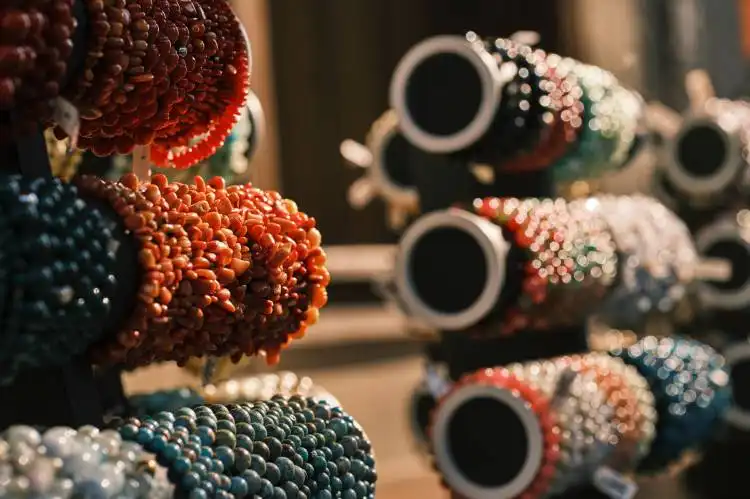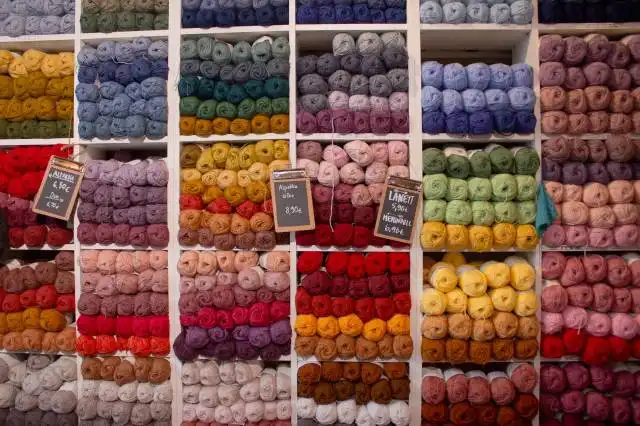Start a Art Supply Store
Painting Your Future with a Rainbow of Opportunities
| Updated


ART SUPPLY STORE
Unleash the colorful world of commerce by giving life to an Art Supply Store. Imagine a bustling hive of creators, eagerly filling their baskets with vibrant paints and delicate brushes, only possible through your imaginative endeavor. An Art Supply Store serves as a one-stop-shop for artists of all levels and backgrounds, offering a wide range of products like paints, brushes, canvases, sketching pads, pencils, and more. It's a business rainbow awaiting your personal pot of gold!
Jump to Business Plan
RELATED BUSINESS IDEAS
Browse ALL Arts & Crafts Business Ideas
Discover Your Perfect Domain
Unlock the door to your online success with our hand-picked selection of premium domain names. Whether you're starting a new venture or rebranding an existing one, the right domain can set the tone for your digital presence. Browse through our curated list, each with its unique potential to enhance your brand's visibility and credibility.
ART SUPPLY STORE MINI BUSINESS PLAN
This a quick reality check to help you identify the strengths and weaknesses of your business concept before you dive in.
Business Idea: Art Supply Store
Expected Percent Margin:
- Gross Margin: 40-50%
- Net Profit Margin: 10-15%
Earnings Expectations:
- Daily Earnings: $100 - $400
- Weekly Earnings: $700 - $2,800
- Monthly Earnings: $3,000 - $12,000
- Annual Earnings: $36,000 - $144,000
Actions to Hit Those Numbers:
Inventory Management:
- Initial Investment: At least $10,000-$30,000 for a diverse and quality inventory.
- Supplier Relationships: Develop relationships with at least 3-5 reliable art suppliers.
Marketing and Customer Acquisition:
- Social Media: Post art tips, product features, and customer artwork at least 4-7 times per week.
- Local Advertising: Budget at least $300 a month for local newspaper ads or supporting art events in the community.
Sales and Customer Experience:
- Staffing: Employ 1-2 part-time staff who are knowledgeable about art and can provide recommendations.
- Product Diversity: Keep a variety of products catering to different art forms and skill levels.
Cost Control:
- Rent: Choose a location where rent is less than 5-10% of expected monthly sales.
- Utilities and Maintenance: Budget around $200-$500 per month.
Business Operations:
- Opening Hours: Open at least 6 days a week to ensure availability to customers.
- Transaction Volume: Aim for 10-20 transactions per day, with an average sale price of $30-$50.
These are generalized estimations and can vary depending on location, economic conditions, and the specific cost structure of your business. Please consult with a financial advisor for more tailored advice.
NOT WHAT YOU HAD IN MIND? Here are more ideas



Browse ALL Arts & Crafts Business Ideas
Grab Your Business Website Name
Before you get caught up in the whirlwind of setting up your business, invest in a domain name. It's a small but significant step that lays the foundation for your brand and makes it easier for customers to find and trust you. Just like you wouldn't build a house without securing the land first, don't build a business without securing your domain name.
"Why? Can't that wait?" Here's why it shouldn't
Step 1: Determine if Starting an Art Supply Store is the Right Endeavor
Breakdown of Startup Expenses
Before starting an art supply store, it is important to understand the startup expenses that will be associated with the business. These expenses can include the cost of renting or purchasing a space, the cost of inventory, the cost of hiring employees, the cost of advertising, and the cost of any necessary licenses or permits. It is important to research these costs and create a budget that will allow the business to be successful.
Breakdown of Ongoing Expenses
In addition to startup expenses, it is important to understand the ongoing expenses that will be associated with the business. These expenses can include the cost of rent or mortgage payments, the cost of inventory, the cost of employee wages, the cost of advertising, and the cost of any necessary licenses or permits. It is important to research these costs and create a budget that will allow the business to be successful.
Examples of Ways to Make Money
There are a variety of ways to make money with an art supply store. These can include selling art supplies, offering classes or workshops, offering custom framing services, hosting art shows or events, and selling art prints or other merchandise. It is important to research the different ways to make money and create a plan that will allow the business to be successful.
Step 2: Name the Business
When it comes to naming your business, it's important to pick something that is memorable and reflects the type of business you are running. Consider using words that are related to art supplies, such as “paint”, “brush”, “canvas”, or “easel”. You can also use a combination of words to create a unique name. Make sure to research the name you choose to make sure it is not already in use. Additionally, you should check to see if the domain name is available to purchase. If you are having trouble coming up with a name, consider using a business name generator to help you brainstorm ideas.
Registering the Business
Once you have chosen a name for your business, you will need to register it with your local government. This process will vary depending on the state or country in which you live. Generally, you will need to fill out paperwork and pay a fee to register the business. Additionally, you may need to obtain a business license or permit. Once the paperwork is completed, you will receive a certificate of registration that will allow you to legally operate your business.
Protecting Your Business Name
In addition to registering your business, you should also consider trademarking your business name. This will help protect your business from being used by another company. To trademark your business name, you will need to fill out an application with the United States Patent and Trademark Office. Once the application is approved, you will receive a certificate of registration that will protect your business name from being used by another company.
Creating a Logo
Once you have registered and trademarked your business name, you should create a logo to represent your business. A logo is a visual representation of your business and can be used on your website, business cards, and other promotional materials. When creating a logo, consider using colors and shapes that are related to art supplies. Additionally, you should make sure the logo is simple and easy to recognize. Once you have created a logo, you should register it with the United States Copyright Office to protect it from being used by another company.
Step 3: Research the Market
Analyze the Competition
It is important to research the competition in the area to determine if there is room for another art supply store. Take a look at the existing stores and what they offer. Analyze the prices they charge and the types of products they carry. This will help you determine what type of store you should open and how to differentiate yourself from the competition.
Identify Potential Customers
Identifying potential customers is essential for the success of any business. Research the local population to determine who your target customers will be. Consider their age, gender, income level, and interests. This will help you determine what type of products to carry and what types of marketing strategies to use. Additionally, research any local art organizations or schools that may be potential customers. This will help you create a customer base and build relationships with potential customers.
Step 4: Create a Business Plan
Outline Goals and Objectives
Creating a business plan is essential for any business venture. It should outline the goals and objectives of the business, such as what products and services the business will offer, what the target market is, and how the business will be marketed. It should also include a timeline of when the business will be up and running, and what milestones need to be achieved. Additionally, the business plan should include a breakdown of the startup costs, such as the cost of inventory, rent, and other expenses, as well as a breakdown of the ongoing expenses, such as payroll, utilities, and other costs.
Establish a Budget
Once the goals and objectives of the business have been outlined, it is important to establish a budget. This should include the initial startup costs, such as the cost of inventory, rent, and other expenses, as well as the ongoing expenses, such as payroll, utilities, and other costs. Additionally, the budget should include a plan for how the business will make money, such as through sales of products and services, or through other means, such as advertising or sponsorships. It is important to create a budget that is realistic and achievable, and to ensure that the business has enough funds to cover the startup and ongoing costs.
Step 5: Obtain Financing
Consider Small Business Loans
Before starting an art supply store, it is important to consider the financial resources available to you. Small business loans are a great option for entrepreneurs who need additional capital to cover startup costs. These loans are typically offered by banks and other financial institutions and can be used to cover the cost of inventory, equipment, and other startup expenses. When applying for a loan, it is important to have a detailed business plan and financial projections to show the lender that the business is viable and that the loan will be repaid.
Explore Crowdfunding Options
Crowdfunding is another option for entrepreneurs who need additional capital to launch their business. Crowdfunding platforms such as Kickstarter and Indiegogo allow individuals to raise money for their business by appealing to a large group of people. When creating a crowdfunding campaign, it is important to create a compelling story and offer rewards to those who donate. It is also important to set realistic goals and be transparent about how the money will be used. With the right strategy, crowdfunding can be an effective way to raise the funds needed to launch an art supply store.
Step 6: Secure a Location
Consider the Size and Location of the Store
When selecting a location for the art supply store, it is important to consider the size of the space needed for the store. The size of the store should be based on the amount of inventory that will be stocked. It is also important to consider the location of the store. The store should be located in an area that is easily accessible to customers and has a good amount of foot traffic. Additionally, it is important to consider the cost of the lease for the space.
Negotiate a Lease
Once a location has been identified, it is important to negotiate a lease for the space. It is important to understand the terms of the lease, including the length of the lease, the cost of the lease, and any other restrictions that may be included in the lease. It is also important to consider any additional costs that may be associated with the lease, such as taxes and insurance. Additionally, it is important to negotiate any additional services that may be included in the lease, such as maintenance and repair services. Once the lease has been negotiated, it is important to have the lease reviewed by a lawyer to ensure that all of the terms of the lease are in the best interest of the business.
Step 7: Purchase Supplies
Research Suppliers
Before purchasing supplies, it is important to research potential suppliers to determine which ones offer the best prices and quality. Researching suppliers can be done online, through industry magazines, and by talking to other art supply store owners. It is important to compare prices and quality of supplies from multiple suppliers to ensure that the best deal is being made. Additionally, it is important to consider the delivery times of the suppliers and the ease of ordering supplies.
Consider Bulk Purchasing
Bulk purchasing can be a great way to save money when starting an art supply store. Bulk purchasing allows the store to purchase a large quantity of supplies at a discounted rate. This can be beneficial for items that are regularly purchased and used in the store. Additionally, it is important to consider the storage space available for bulk purchases and the expiration dates of the supplies. Bulk purchasing can be a great way to save money in the long run, but it is important to ensure that the supplies are being stored properly and that they are not expired.
Step 8: Market the Store
Utilizing social media is a great way to get the word out about your new art supply store. Platforms such as Facebook, Twitter, and Instagram are great tools to reach potential customers. You can post about new products, discounts, and upcoming events. You can also use these platforms to engage with customers and answer any questions they may have. Additionally, you can use social media to advertise your store and attract new customers.
Developing a website is also important for marketing your store. Having an online presence will help customers find your store more easily and learn more about what you offer. You can include information about your store, such as the products you sell, your store hours, and any special events you may be hosting. You can also use your website to showcase customer reviews, which can help build trust and credibility. Additionally, you can use your website to offer online sales and promotions.
Step 9: Open the Store
Hire Employees
Before opening the store, it is important to hire the right employees who are knowledgeable and passionate about art supplies. It is important to find employees who can help customers find the right supplies and answer any questions they may have. Additionally, it is important to have employees who can help keep the store organized and stocked with the right supplies.
Set Up the Store
Once the employees are hired, the next step is to set up the store. This includes arranging the store layout, setting up the checkout area, and stocking the shelves with the right art supplies. It is important to create an inviting atmosphere that encourages customers to explore the store and find the supplies they need. Additionally, it is important to make sure the store is properly lit and that the shelves are organized in a way that makes it easy for customers to find what they need. Finally, it is important to make sure the store is secure and that the checkout area is properly staffed.
EXPLORE MORE CATEGORIES
Browse ALL Business Idea Categories
TAKE THE NEXT STEPS










